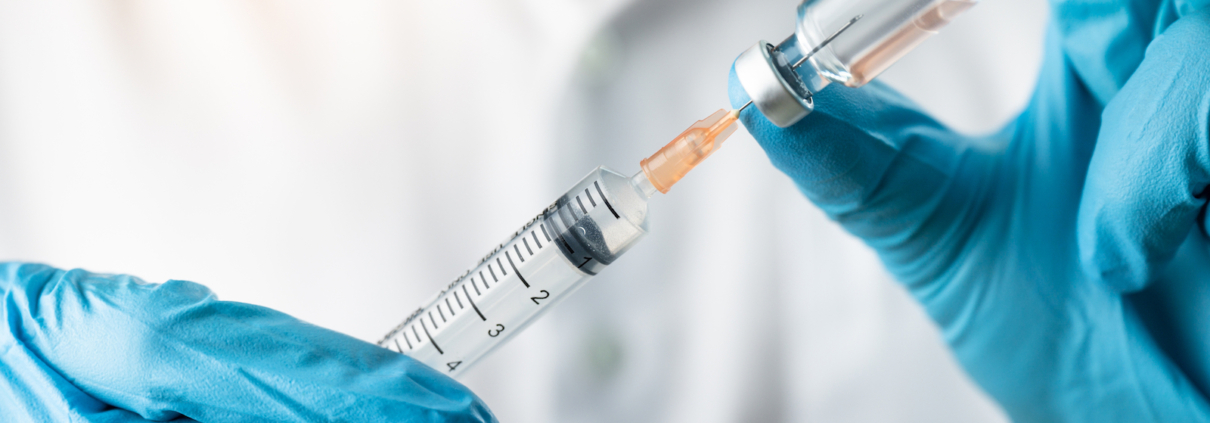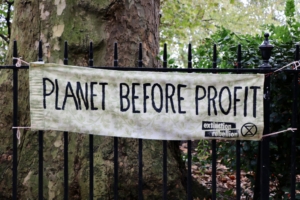(Vaccine) Trial by Fire
Here’s What You Need To Know
Bringing any new drug treatment to market is an arduous process with the potential for significant public and regulatory scrutiny even in normal times. Now, as pharmaceutical manufacturers prepare to bring hundreds of millions of doses of coronavirus vaccine to market, the stakes are anything but normal. As drug manufacturers tackle the complex science of creating a safe and effective vaccine at warp speed, public scrutiny will be even more aggressive.
In the current age of organized activism and lightning fast (mis)information sharing, no good deed goes without deep and exhaustive scrutiny from a wide range of policymakers, news outlets, competing advocates, and other stakeholders. This new reality means drug firms will need to lean on the expertise of their public affairs professionals to skillfully navigate the likely political and reputational risks as they seek to educate policymakers and the public about the benefits and reliability of their COVID-19 vaccines and their responsible and fair business practices.
The challenge of navigating such public scrutiny has never been more daunting, and if anything, is a sign of what’s to come for future public health challenges. To be successful, they will need to anticipate and prepare for six important questions:
Subscribe to Receive Insights
"*" indicates required fields
Who Gets the Vaccine and in What Order?
As global leaders prepare to embark on the “largest immunization campaign the world has ever seen,” questions remain about who should be eligible to receive early COVID-19 vaccine doses that will be in limited supply for some time. While pharmaceutical companies will work hard to ensure that billions of regimens are available as quickly as possible, the reality is it could take many months before those can be manufactured and distributed. That expected reality has patient advocates and political leaders debating how governments should prioritize the administration of the vaccination in the short term. Some argue that those in high-risk groups or those with significant co-morbidities should be at the top of the list, while others insist that health care workers and essential employees should go first. Others say that racial and ethnic groups that appear to be more susceptible to the virus, such as African Americans and Native Americans, should be top priority. This debate has global dimensions too, with concerns that first world nations with the ability to develop and pay for its administration will hoard the vaccine while it’s still in short supply, making a country’s ability to pay the chief determinant in whether or not its people are protected. No matter which groups are chosen to receive the first round of vaccinations, there will be those in other groups who wanted it but could not get it, leaving governments, health care organizations, and manufacturers facing an inevitable public backlash for which they must prepare.
Even if There’s a Vaccination Available, Who Will Take It?
Amid the clamor to be first for the vaccine is another reality that many will be resist being among the first to try it in an uncontrolled setting. In fact, Gallup reported this week that one in three Americans would not receive a COVID-19 vaccination, while another survey showed as few as 50 percent of Americans are prepared to receive it. These individuals aren’t all traditional anti-vaxxers who refuse to vaccinate their children or receive a flu shot, but rather, are simply skeptical of a new vaccine’s efficacy and safety or skeptical of public health directives post-lockdown. Their hesitation is likely to fuel a cycle of public debate similar to that over masks, where the more the media and policymakers demand lockstep compliance, the more some citizens will feel that their concerns, legitimate and otherwise, are being disregarded. Such a debate will increase existing divisions and rancor while undermining needed public health outcomes, particularly if government bodies at various levels attempt to compel people to take the vaccine. For public affairs professionals in the life sciences community, the potentially Sisyphean task will be to ensure science and health facts are not lost amid the debate, particularly if and when reports, whether they are truth or myth, emerge to suggest the vaccine is ineffective or unsafe.
How Will Leaders Address Concerns of Racial Disparities in Access and Outcomes?
In recent months, the nation’s and, indeed, the world’s attention has turned to the subject of systemic inequality. While the discussion has largely focused on police practices and economic disparities, some say that coronavirus clinical trials do not accurately reflect the full diversity of the population, leaving researchers with a poor study population that may not demonstrate how the vaccine will perform with wide use. Still others fear that America lacks a plan on “how to reach racial and ethnic groups that have not only been devastated by the virus but are also often skeptical about government outreach in their communities,” according to Politico. Every aspect of the vaccine’s distribution, administration, and effects will happen in the context of this heightened scrutiny and social unrest regarding racial disparities. Meanwhile, public health officials and public affairs professionals will have to convince groups already disproportionately harmed by the coronavirus that efforts to distribute a vaccine in their communities are meant to help, not hurt, them.
Can the Supply Chain Meet the Demand Fast Enough?
Securing the supply chain is a crucial step to distributing the forthcoming COVID-19 vaccine. This task will be tough, as coronavirus has already exposed cracks in the worldwide supply chain for pharmaceuticals and medical supplies necessary to create and administer vaccines. Moreover, recent reports about limited quantities of crucial component parts, like hard-to-make vials, make it harder for health care professionals to actually administer the vaccination. Meanwhile, media and Congressional scrutiny on the Trump Administration’s decision to give substantial loan to Kodak after the photography company dedicated a record amount of money to lobbying the Administration for the aid has undermined plans to have the company help fill this supply gap and could dissuade other potential manufacturers from offering aid. Once companies begin sending a COVID-19 vaccine around the globe, scientists are worried about supply chain viability issues such as counterfeiting and maintaining the necessary conditions to keep the vaccine cold enough for future use. For those representing the life sciences industry, they must be ready for new levels of scrutiny regarding their business practices, assuring the public and policymakers that they are behaving responsibly and competently, even in the midst of the chaos of crisis response. Renewed scrutiny could last long after coronavirus is under control, potentially establishing a new precedent in the oversight and regulation of the pharmaceutical industry.
What Ownership Does the Public Have?
For years leading up to the coronavirus pandemic, some advocates have argued that because a lot of basic scientific research is publicly funded via government grants and public universities, the public should have at least partial ownership in scientific discoveries made on their dime, whether the ownership takes the form of patents, data, or the product itself. With governments across the globe making multibillion dollar investments in pharmaceutical companies’ pursuit of COVID-19 vaccinations, some advocates say taxpayers should have ownership or rights to these treatments once they hit the market, an expansive and possible precedent-setting argument heard from activists who have long argued that in pursuit of universal health care, pharmaceuticals should be classified as a global public good. Because of this governmental investment, many argue that it should be totally free to the public, with some suggesting it be free for the entire global community. Pharmaceutical companies are trying to balance protecting their intellectual property with commitments and partnerships to make their product readily available when doses are urgently needed. In the long term, however, innovative life-saving treatments require intellectual property protections if there is going to be an incentive to develop and manufacturer them. Industry representatives will have to continue their efforts to make clear why these protections matter even as their firms contribute institutional knowledge, administrative costs, and corporate investment towards tackling the world’s greatest health care challenge in a century.
Has the Immense Focus On COVID-19 Undermined Efforts To Develop and Distribute Treatments for Other Ailments?
Even as the world has seen nearly 21 million cases of coronavirus and 750,000 deaths associated with it, people all over the world are still dying of more predictable causes – around 150,000 of them each day. Heart disease, Alzheimer’s, diabetes, cancer, autoimmune diseases, and tuberculosis are still some of the most common causes of death, and among those living in low income countries, communicable diseases are 7 out of the 10 most likely ways people die. The life sciences community provides hope for cures and treatments that can extend, improve, and save lives. Leading up to coronavirus, great strides had been made to address a variety of illnesses and disease. Much of this research, including hundreds of vital clinical trials regarding other health challenges, has been stalled or canceled entirely as scientific efforts are directed to solve the immediate crisis of coronavirus. With economic stagnation and university closures to prevent COVID-19 transmission, labs are now empty, too. In the U.S. alone, important life science research on tumors, strokes, anemia, and cancer has come to a halt. As coronavirus becomes better managed, the illnesses and deaths of those not infected by COVID-19 will return to focus, and fairly or unfairly, so, too, will questions about the reversal of medical progress during this critical time.
We know a lot more about coronavirus than we did when it began. Care has improved, and a vaccine will soon be available. For those in the life sciences industry, this is unchartered territory – and for more than just the scientists racing to develop safe and effective vaccines. For public affairs professionals, the coronavirus crisis presents new challenges in policymaking and public relations, and they must be prepared to answer the tough questions about creating and distributing this desperately sought-after vaccine. Their ability to shape the knowledge and opinions of world leaders and the global population will be indispensable in the fight to eradicate this deadly disease and many others.



